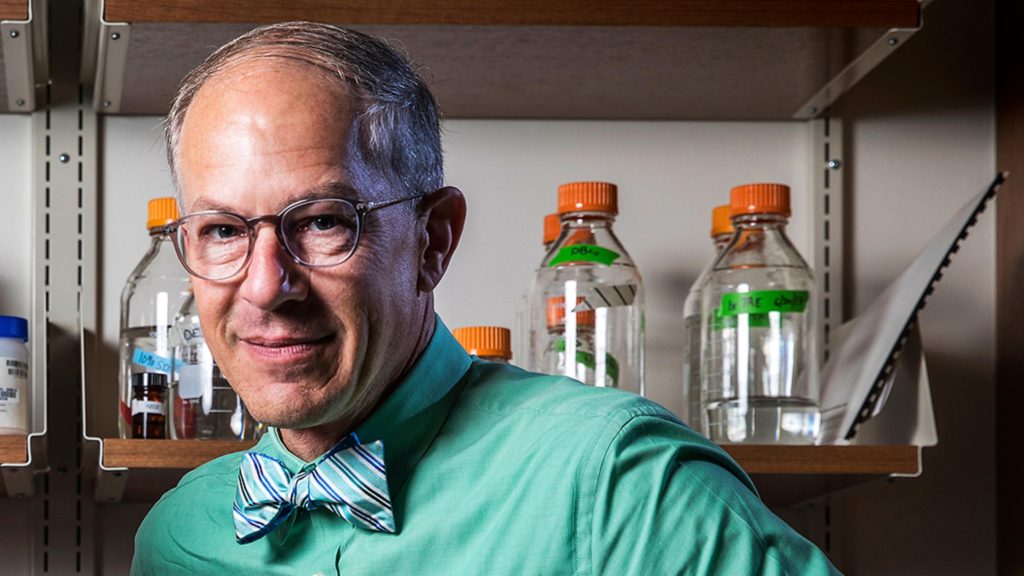
DR DAVE WESSNER PHOTO BY CHRIS RECORD/DAVIDSON COLLEGE
March 26. Dr. Dave Wessner, a professor of biology at Davidson College, says the COVID-19 virus is different from other viruses the scientific community has seen in the past. For one thing, it is “highly contagious,” more so than other viruses.
According to Wessner, the 2002 SARS outbreak and the 2012 MERS illness were more lethal but didn’t spread so easily.
The current strain is—at least up to now—causing fewer deaths, Wessner says.
“The real concern is that it can easily spread to the most vulnerable population… And our health care system is not equipped to handle large numbers of sick people,” he said on a Bloomberg podcast.
Wessner, a Davidson resident, studied the pathogenesis of coronaviruses as a post-doctoral researcher at the Uniformed Services University of the Health Sciences.
The strain that causes COVID-19 is highly contagious, he says, yet coronaviruses themselves are not new.
“We’ve studied them since the 1960s,” he said.
In fact, certain coronaviruses are among the pathogens that cause the common cold. However, the strain behind COVID-19 is new.
Wessner addressed the following questions:
How does a virus like SARS-CoV-2 suddenly appear?
A lot of this is still unclear. We just haven’t had enough time to study the origins of this virus, but apparently this virus jumped into the human population from a wild animal. I’ve heard speculation that it came from bats or from civets.
How does it leap from one species to another?
Viruses are known as very messy microbes. They replicate very quickly and mutate very rapidly. To complicate matters, a coronavirus is an RNA virus—rather than having a double-stranded DNA genome like we do, it has a single-stranded RNA genome which makes it more error-prone than a DNA virus. If a mutant appears that is well adapted to the non-natural host, it’s going to thrive. And when viruses switch species, they are frequently much more virulent than they are in the natural host.
Is this kind of leap from one species to another unusual?
No, this happens all the time. HIV is a good example of this kind of transition. HIV started as a simian virus that got transmitted from a chimp to a human and mutated to adapt to humans.
In fact, transfers from non-humans to humans are occurring more often because we’re expanding more. If there’s a virus affecting mammals deep in the Amazon, there are more chances for it to spread because there are increasing interactions between humans and non-humans.
Fortunately, most often, these are dead-end transmissions. We see that periodically with influenza. H7N9, a virus that presumably moved from chickens or ducks, has been lethal but the spread has been very limited.
PHOTO BY CHRIS RECORD/DAVIDSON COLLEGE




